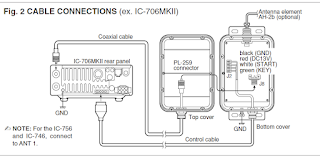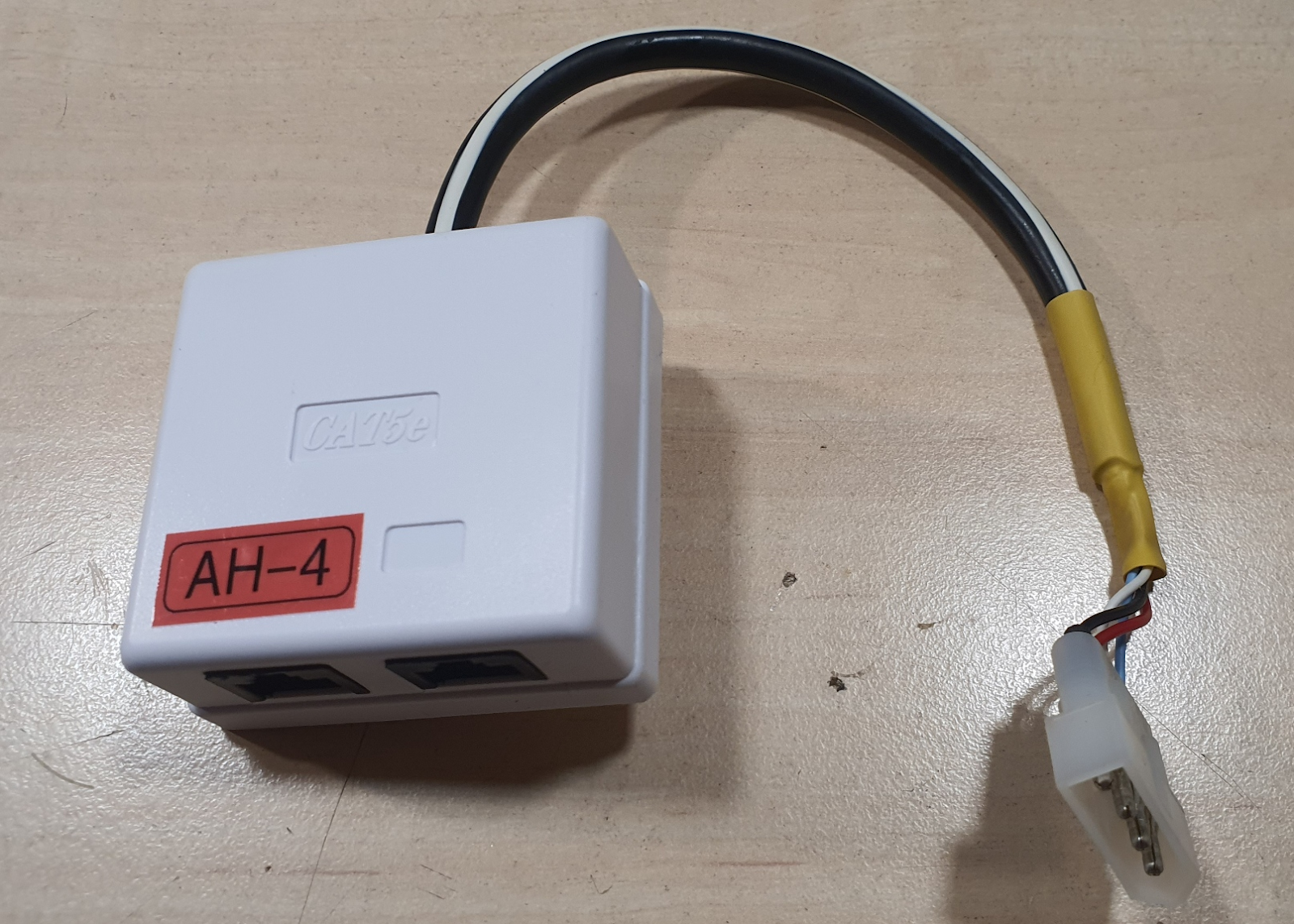The Spring is here full power so is the war just North of Romania so our Emergency Communication Team (RVSU) is preparing for... field day!
Our standard in HF EmComms are ICOM radios and ATU's; we are using IC-7100 as our main HF radio paired with T2FD antennas for NVIS and AH-4 with verticals and wires for various Long Range HF.
In this post I will briefly show one modification for the AH-4 Automatic Antenna Tuner (one of the best in my opinion, for 100W output power).
It consist in changing the way the Coaxial RF cable and the Control cable are connected.
Because our concept is based on modular kits, the AH-4 must be able to be installed quick, reliable and we must have provisions to modify the setup if the field conditions required so and this must be done by operators with minimal training.
The standard ICOM AH-4 box include, among other things, a 10m LMR coaxial cable and 10m of 4 wire control cable terminated with the infamous MOLEX connector present in ICOM HF radios.The way those cable connect to the Tuner box is pretty against "field use" principles therefore, a solution must be found.
After a few years of playing with my own AH-4, I concluded that it is not acceptable to open the case of the tuner anytime the cable must be connected or disconnected.Another problem is the fixed lenght of the cables. Just 10m might not be enough in certain scenarios and while another coaxial can be added with the help of a female-female adapter, require intimate knowledge from the field operator and present some fatal risks for the integrity of the radio or the ATU if the wires are connected in the wrong way.
So, another solution must be found!
We are not using the ATU in permanent setup so, some measure originally designed to prevent the water or moisture ingress can be reduced in order to accomodate some that can give more simplicity in installation and use.First, the RF connector must be moved from inside the ATU to the outer case.
The SO-239 (UHF-female connector) will be seated just where the cable clamp was.
The connector is a good quality one, from Amphenol.
Unfortunately, the plastic will not support the mechanichal stress of the connector so a small plate was cut from a piece of Aluminium.
Then, the ATU's case was prepared to accomodate the SO-239; the backplate was threaded for 3mm screws for better electrical contact.
Everything fits.
The lower left screw is longer. This is because there will be the Ground connection for the small piece of coaxial cable from SO-239 to the ATU's PCB.
This coaxial patch was made from some cable left from GSM sites and I know it can handle easy 100 W up to 100 MHz. So, I prepared it to be used here.
I removed the original piece of metal with the old SO239 and make some scratches on the Ground pad to install the coaxial patch.
I found a little piece of metal, soldered it onto a metal shield and put some heat shrink tube on it to fix the coaxial patch firmly in place:
Looks good and it is the time to take it to the next level: the control cable.
A few words about choosing the right cable:
In the field you need various lenghts of cables. Often those cables are cut, lost, or even forgotten at the base.
The ATU is drawing less than 1 Amp, typical around 200 mA. The control signals are at TTL logical level (5V) and the "protocol" is nothing more than pulling to ground or to +5V so nothing special with this cable must be observed.
Can be a cheap cable and it is desirable to be found easy. Long story short: what if I could use a FTP cable? Well, on my balcony I have an AH-4 which is connected to the radio with this kind of cable and for 2 years performed extremely well.
The problem with my AH-4 is that i modified it very ugly; the female RJ-45 connector is placed on a cut into the case and, believe me, it looks bad!
In this case, I decided to use something that I already have in my junk box from a never-finished project. A RJ-45 female-male patch cable designed for panel mounting.
I was a little bit nervous because I thought the lenght of the patch cable was not enough to go from the upper case of the ATU to the PCB...
Checked and it was just the right lenght! So, I could start making the square hole from the round one!
... it fits now:
And this how it is. I put some hot glue to seal the holes but I forgot to take pictures...
At the other end of the control cable, a wall RJ-45 connector was tied to a MOLEX ATU connector. Fortunately, I bought some kits a long time ago so I could make it fast.
This is the electrical diagram for the RJ-45-MOLEX adapter:
... and this is how it looks:
Yes, I know, it's horrible but this is what I found at nearest store to me. I promise I will search for other solution but this is it, for now.
Now we can use (almost) any lenght of network UTP cable and (almost) any lenght of coaxial changing them in the field. And, if there is need for the network cable to our applications and no need for HF, we can use the cable for that purpose.
I hope this is an usefull ideea and will inspire other "brave hams"...
Some notes:
73 de YO3HJV, Adrian.

















Niciun comentariu:
Trimiteți un comentariu